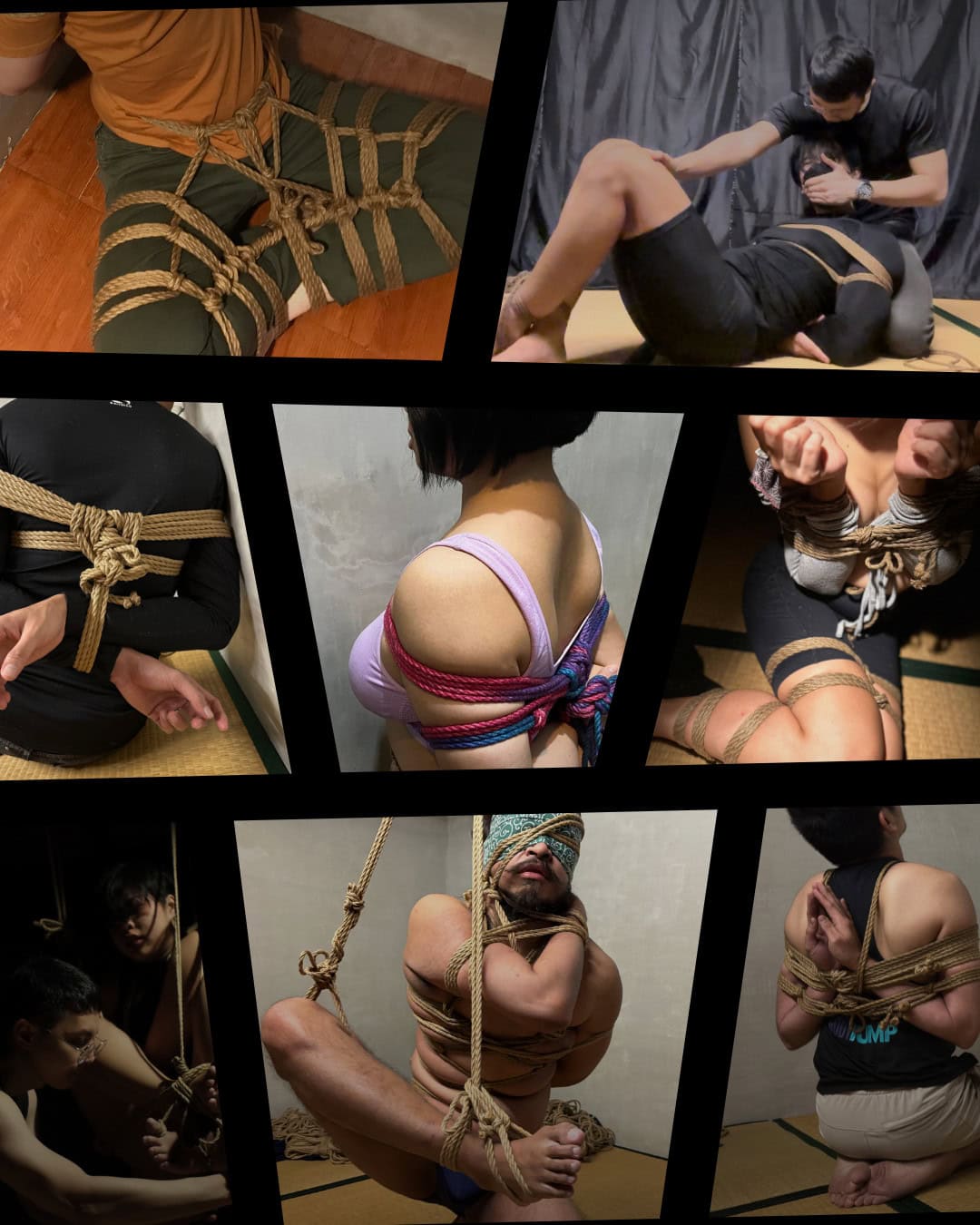Php5,000 per workshop (for couples/individuals)
These 2-hour private workshops are only available by appointment, exclusively for you and your selected participants. They’re held at your preferred venue or at our private rope studio in Makati.
- Level 0: Invitation
- Level 1: Introduction
- Level 2: Intention
- Level 3: Integration
- Level 4: Invention
- Level 5: Improvisation
These workshops contain lessons for both rope tops and bottoms, unless you specify that we focus on one role in particular.
Note: You only need to complete one course from each level to progress to the next. Completing all the courses is encouraged but not required.
To book a class, kindly email [email protected]
—
Level 0: Invitation (Optional)
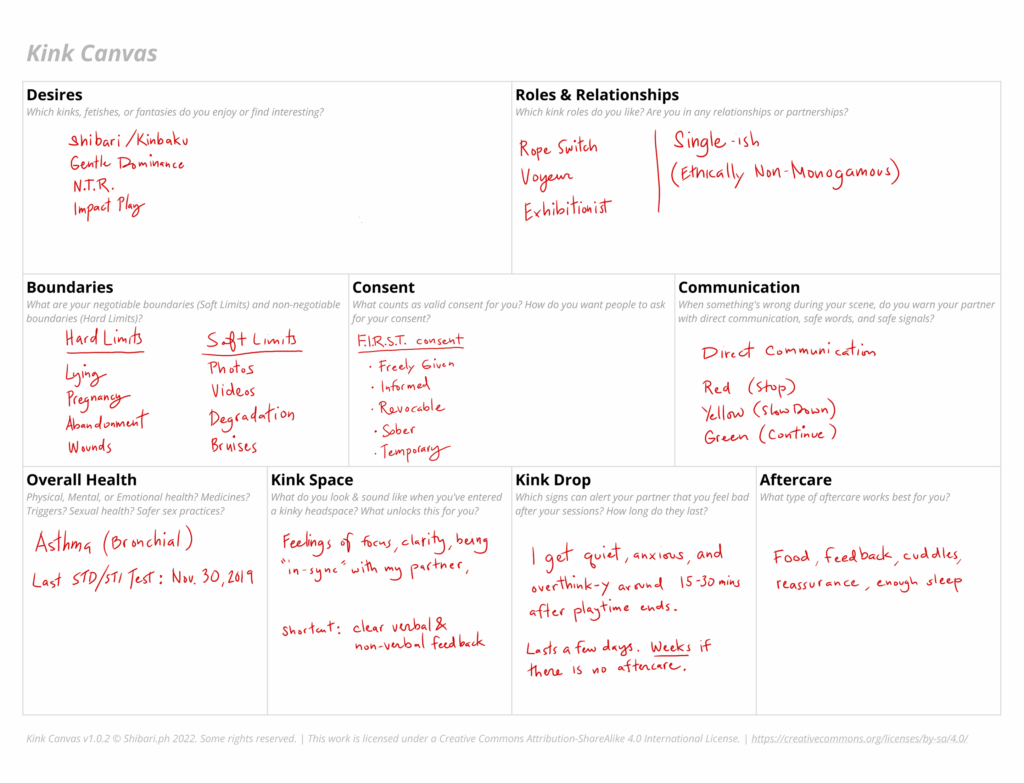
Note: This face-to-face workshop comes with a live Q&A but if you want to learn at your own pace, it is also available as a more detailed free online course →
[001] Introduction to BDSM will help newbies discover which skills to develop, who their ideal partners are, and plan memorable sessions that have your partners coming back for more.
We do this using a tool called the Kink Canvas—so that by the end, you’ll have a one-page worksheet that helps you:
- map your kinky profile
- check at-a-glance if someone is compatible with you, and
- act as a clear record of how you want your sessions to go
No more taking multi-page quizzes, negotiating for hours with bad matches, or making mistakes that get you ghosted by partners you really liked.
In this course, you will:
- Map out your kinky Desires
- Nail down your BDSM Roles and chart your Relationships
- Set your Boundaries through Soft and Hard Limits
- Prevent conflict through your preferred Consent Models
- Communicate danger even when you’re roleplaying or unable to speak
- Raise relevant flags for Health details during play
- Unlock a euphoric headspace or flow state through Kink Space
- Quickly spot and slow down the crash from Kink Drop
- Pick the right Aftercare for you, your partner, and your session
—
Level 1: Introduction
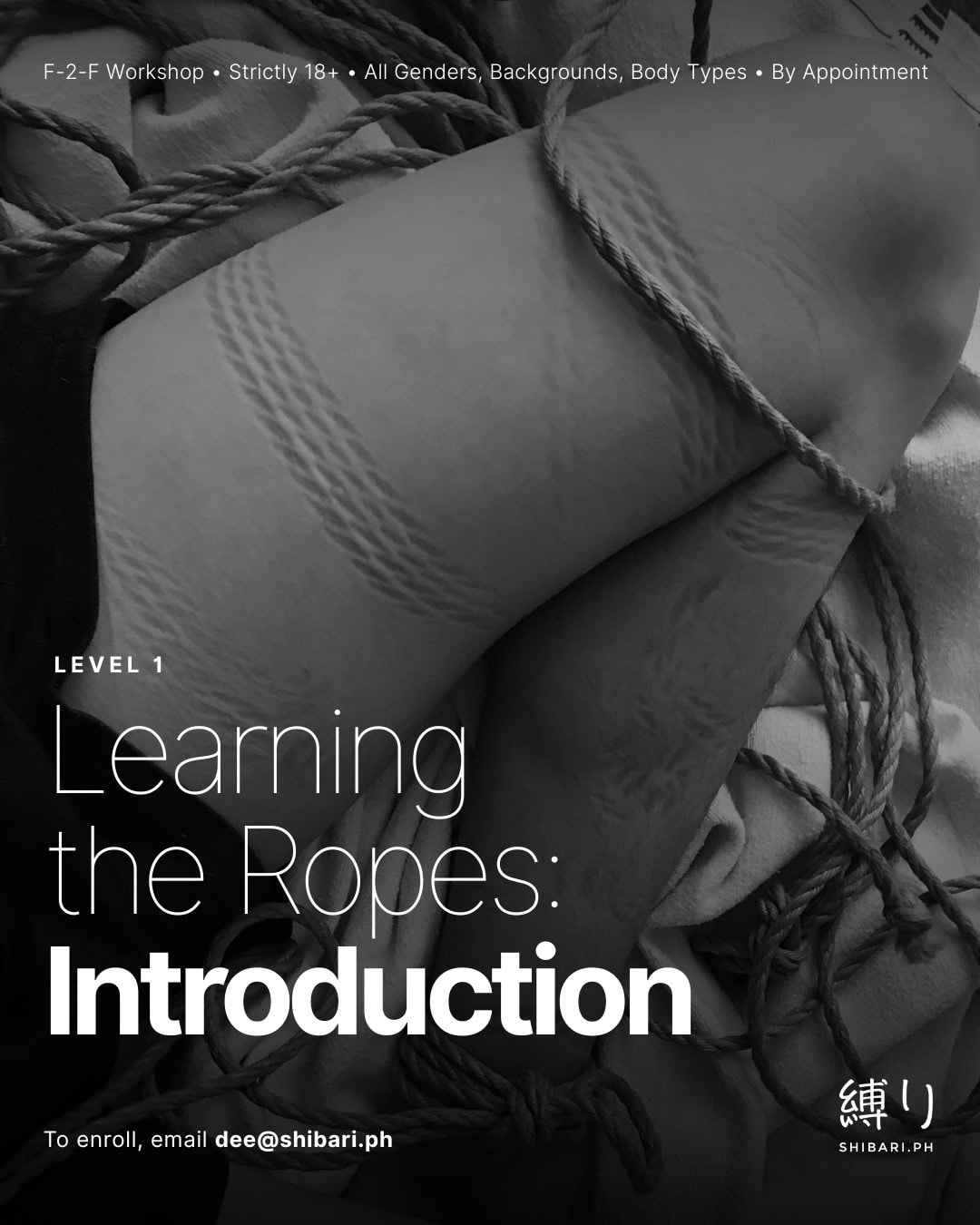
For level 100, there are no skill prerequisites whatsoever. Complete beginners are welcome to join.
[101] Introduction to Shibari will teach you how to work with your partners to create exciting and memorable rope sessions—without memorizing dozens of patterns, needing extreme flexibility, or using more than one piece of rope.
You’ll learn:
- How to treat shibari as a communicative practice, not just a visual or restrictive activity
- The 3P Method which encourages a partner-first, pattern-later approach to tying
- The 3B Model which helps you anchor safety and awareness into your practice
- How to calibrate with your partner physically to find their ideal tension
- How to connect with your partner emotionally to find out how they feel
- How to communicate feedback with less room for misunderstanding
- 4 ways to tie the number 1 bondage technique used by newbies and veteran players alike
- How to combine all the above lessons together for easy, simple, and improvised play
—
Level 2: Intention
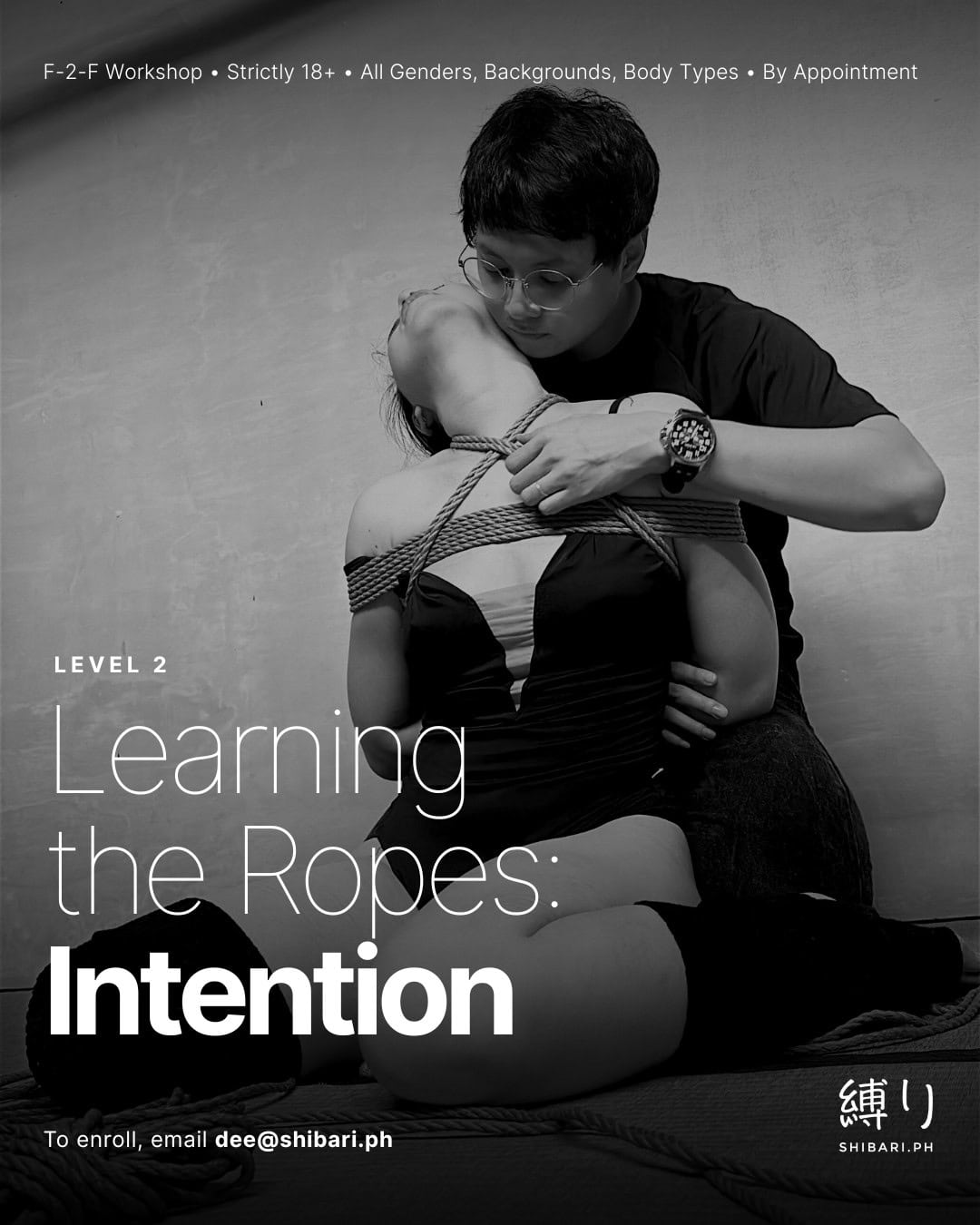
For level 200, tops need to recognize and understand how to create a single column tie in a way that reduces or eliminates the risk of collapsing or accidental tightening. Bottoms must be able to listen to their body’s balance, breathing, and body signals as well as communicate concerns in a calm and timely manner.
[201-204] Intention will help you go straight to having fun by teaching you how to match the method with your mood. Using simplified session strategies, we’ll demystify common types of play such as pleasure for sensuality, pain for sadism, power for dominance, and patterns for aesthetics.
The topic varies per course.
- 201: Sensual Bondage Basics: Learn how to evoke and navigate feelings of intimacy and vulnerability with your partner—using games that engage their sense of touch, both from a distance and at close proximity.
- 202: Sadistic Bondage Basics: Learn how to deliver and endure varying levels of stress and suffering with your partner—using games that use simple wraps and various sources of pressure and tension.
- 203: Dominant Bondage Basics: Learn how to facilitate and indulge in power exchange sessions with your partner—using games that treat movement as the primary currency of power, exploring both its restriction and manipulation.
- 204: Aesthetic Bondage Basics: Learn how to envision and express beauty in rope bondage with your partner—using games that leverage your rope tension, pursuing the elegance of symmetry or the appeal of disorder.
—
Level 3: Integration
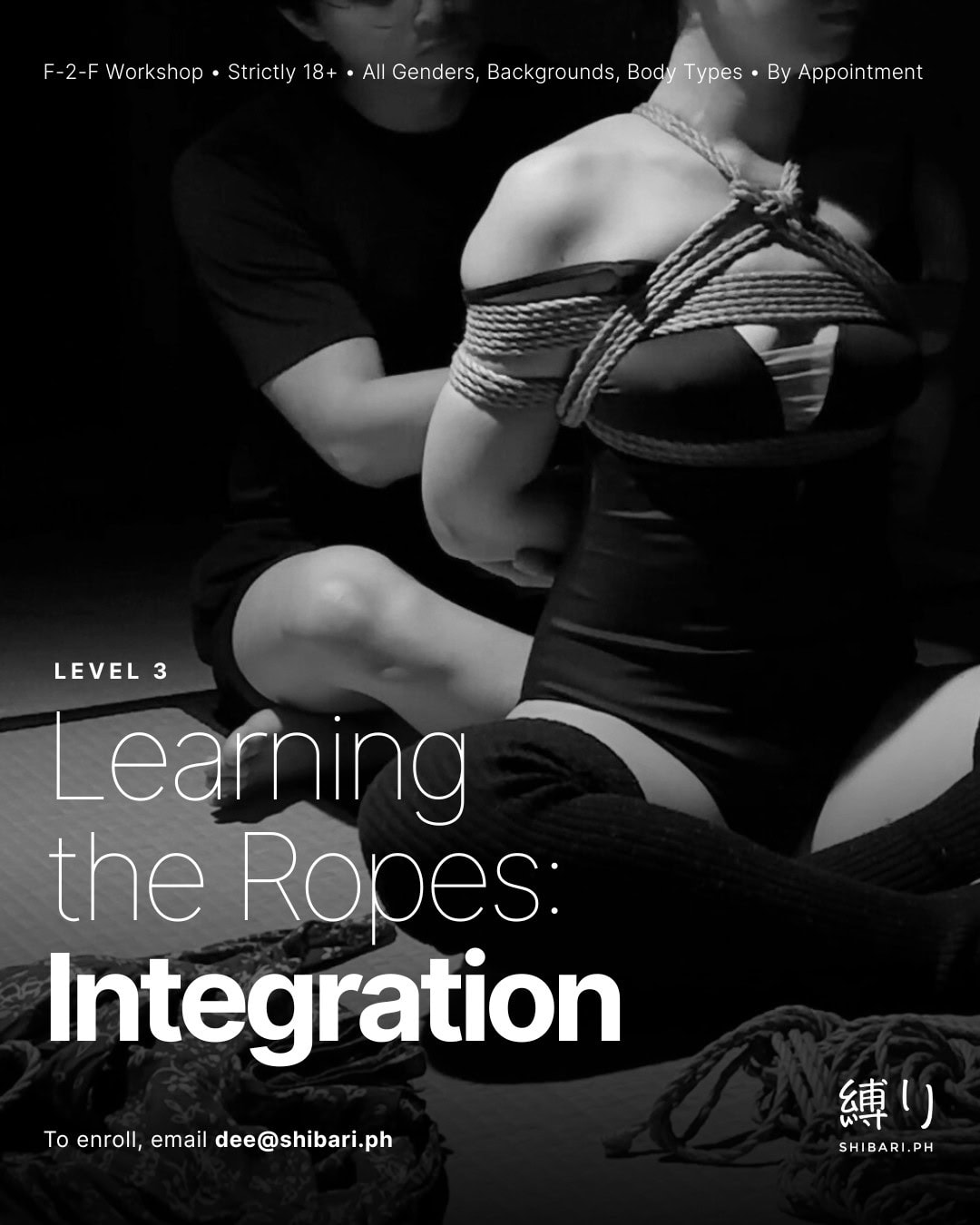
For level 300, tops need to be able to competently perform a single column tie that is non-collapsing, non-self-tightening in under 15 seconds. Bottoms must know how to savor or sustain experiences when their body is stimulated, moved, challenged, or composed; as well as report issues in a calm and timely manner.
[301-304] Integration will walk you through tying your first complex harness through the most iconic tie in Japanese rope bondage, the gote shibari.
Otherwise known as the takate-kote (or TK), this tie is known for its exquisite beauty, challenging opportunities, and incredible risk. We’ll show you the sequence, explain the rationale, and share the standards we observe that make these ties satisfying, safer, and sustainable.
The topic varies per course.
- 301: Stem-Based Gote Shibari (aka 2TK): Learn Dee’s interpretation of the stem-based gote’s basic form—from practical advice on setting the bottom’s upper body position, to specific notes on the gote’s constituent frictions, functions and tension considerations unique to the stem-based gote structure.
- 302: Stemless Gote Shibari (aka 2TK): Learn Dee’s interpretation of the stemless gote’s basic form—from practical advice on setting the bottom’s upper body position, to specific notes on the gote’s constituent frictions, functions and tension considerations unique to the stemless gote structure.
- 303: Gote Reinforcements (aka 3TK/3rd Ropes): Discover and play with Dee’s interpretation of the tasuki-gake to create a fuller sense of restraint, prevent accidental shifting, or provide more challenging sensations. (You must already know a 2TK or base form gote.)
- 304: Remaining Rope Management (Gote no Amari Nawa Shibari): Learn how to manage those pesky leftover ropes to create cleaner looking ties, relocate junctions for safety, or improve your harness’ integrity. (You must already know a 2TK or base form gote.)
—
Level 4: Invention
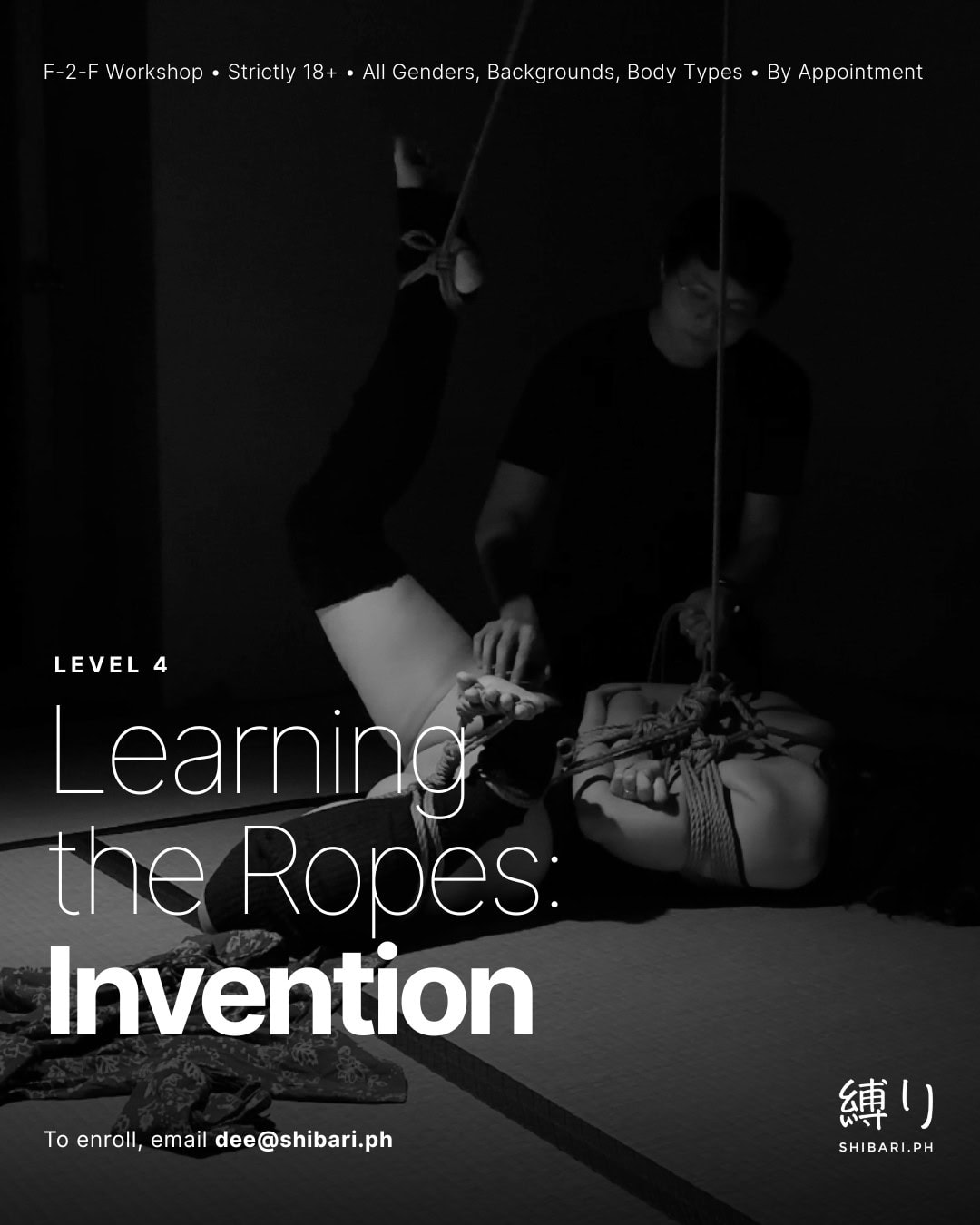
For level 400, tops must be able to implement a structurally solid gote shibari in any of its variations, whether low hands, parallel hands, or high hands, and adapt it to their rope bottoms’ anatomical needs. Bottoms must be able to communicate their preferred wrap placements and unique anatomical needs, as well as recognize and report symptoms of nerve impingement.
[401-412] Invention will challenge tops to apply the structures you learned in the 300-level courses to various body parts and positions, adapting them to their respective needs. Bottoms will be challenged to apply what they’ve learned about immersing, communicating, and sustaining the positions and patterns they’ll now co-create.
There is no single correct answer you are expected to conform to—you’ll have bases for reference, but your objective is to stretch your newfound technical understanding and creativity to strike a balance between form and function during rope play.
The topic varies per course.
- 401: Hishi Karada Shibari (Diamond body tie)
- 402: Futomomo Shibari (Leg binding tie)
- 403: Agura Shibari (Crossed-legs tie)
- 404: Ebi Shibari (Shrimp tie)
- 405: Gyaku Ebi Shibari (Reverse-Shrimp tie aka Hogtie)
- 406: Teppou Shibari (Rifle/firearm tie)
- 407: Koutoubu Ryo Tekubi Shibari/Usagi Shibari (Bunny tie)
- 408: Maete Shibari (Hands in front tie)
- 409: Chokushin Maete Shibari (Hands straight in front tie)
- 410: Munenawa Shibari (Chest/torso tie)
- 411: Kakae Shibari (Leg-embracing tie)
- 412: Kani Shibari (Crab tie)
—
Level 5: Improvisation
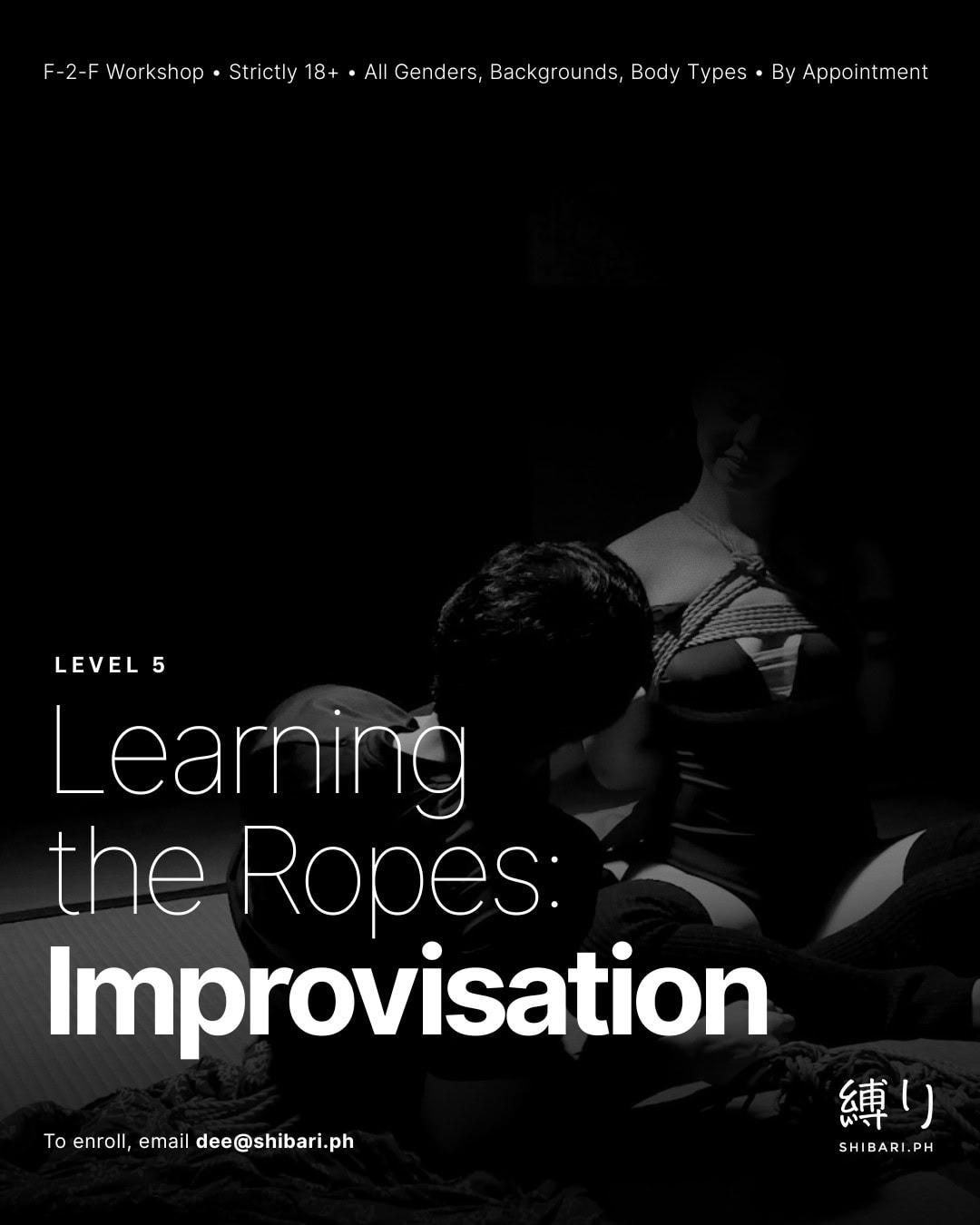
For level 500, tops must be familiar with deconstructing and adapting harnesses as per their partner’s and session’s overall needs. Bottoms must be able to assess, discuss, and co-troubleshoot their positional needs.
[501-504] Improvisation will raise the bar for your sessions by forgoing the comfort of past patterns, braving the unknown of future events, and paying close attention to the present moment.
At this level, your goal is to continuously hone your skills in four key areas: Function, Form, Flow, and Fluency. These training sessions will never end and may be retaken as many times as desired.
The topic varies per course.
- 501: Function – Playing with Bodies in Bondage: Explore how real-world bodies respond inside rope. We’ll study biomechanics, transitions, holistic impact, and personal adaptations so your tying becomes not just safe—but sensually and structurally sound for the unique partners you’re tying.
- 502: Form – How to Tame and Troubleshoot Tension: No more mystery knots or mid-session stress. Sharpen your friction choices, pick the right design systems, troubleshoot in real-time, and build seamless exit plans for sessions that are grounded and graceful from start to finish.
- 503: Flow – How to Focus & Flow with Your Partner: Enter the zone. Discover how to manage distractions, set your speed, and build endurance for challenging sessions—balancing confidence with care as you create immersive and engaging experiences.
- 504: Fluency – How to Touch Hearts & Tell Stories: Go from mechanical to meaningful. Whether verbal or non-verbal, your communication becomes the spine of the scene. Learn how to give critical and succinct feedback, clarify your signal to noise ratio, convey clearer unspoken intentions, and shape a session’s emotional arc.
—
To book a class or ask any questions, kindly email [email protected]

